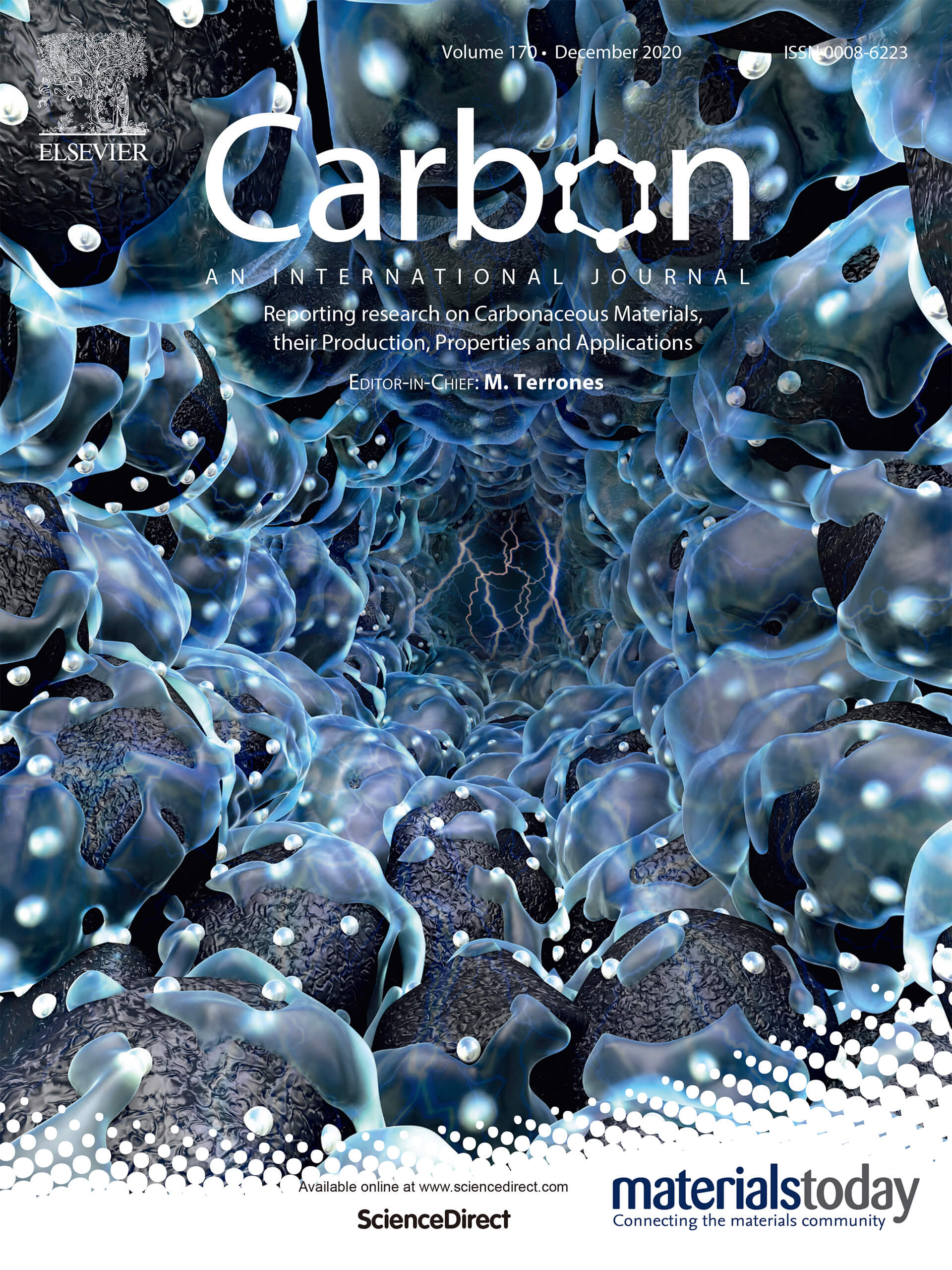論文雑誌「Carbon」のカバーアートを制作しました[豊田中央研究所]
弊社で制作しました豊田中央研究所 熊野尚美様のカバーアートが、
オランダの出版社Elsevierが発行する学術雑誌 Carbonの
2020年10月号 Front Coverに選ばれました。

Client
株式会社豊田中央研究所
スラリー特任研究室
熊野 尚美 様
スラリー特任研究室
熊野 尚美 様
Journal
Carbon
December 2020, Volume 170 pp. 1–688 Link
December 2020, Volume 170 pp. 1–688 Link
Abstract
Because the agglomerate structures of carbon-black-supported platinum nanoparticles (Pt/C) in catalyst inks affect their productivity and performance, identifying the structural parameters that control the dispersion state and stability of Pt/C agglomerates is important. This study aimed to identify agglomerate structures of Pt/C in high-solidity catalyst inks by examining the rheological behavior, fractal dimension, and electrical conductivity of the inks. In inks containing 48–75% water, the amount of adsorbed ionomers decreased with decreasing water content, resulting in increases in the shear viscosity (η), storage modulus (G′), and electrical conductivity (). The fractal dimension of the agglomerates (df) was 1.7–2.1, suggesting that Pt/C agglomerates form a rigid three-dimensional network via a diffusion-limited cluster aggregation process. Conversely, in inks containing 89% water, the amount of adsorbed ionomers increased, leading to the lowest values for η, G′, and . The df value was 2.6, suggesting that Pt/C agglomerates formed a weak-link network via a reaction-limited cluster aggregation process, which was inhibited by the steric and electrostatic repulsion effects of the adsorbed ionomers. The results of this study demonstrate that agglomeration can be controlled through ionomer adsorption by Pt/C, leading to changes in the rheological behavior and stability of catalyst inks.
Influence of ionomer adsorption on agglomerate structures in high-solid catalyst inks
Naomi Kumano*, Kenji Kudo, Yusuke Akimoto, Masahiko Ishii, Hiroshi Nakamura
Volume 169, November 2020, Pages 429-439
Link
Because the agglomerate structures of carbon-black-supported platinum nanoparticles (Pt/C) in catalyst inks affect their productivity and performance, identifying the structural parameters that control the dispersion state and stability of Pt/C agglomerates is important. This study aimed to identify agglomerate structures of Pt/C in high-solidity catalyst inks by examining the rheological behavior, fractal dimension, and electrical conductivity of the inks. In inks containing 48–75% water, the amount of adsorbed ionomers decreased with decreasing water content, resulting in increases in the shear viscosity (η), storage modulus (G′), and electrical conductivity (). The fractal dimension of the agglomerates (df) was 1.7–2.1, suggesting that Pt/C agglomerates form a rigid three-dimensional network via a diffusion-limited cluster aggregation process. Conversely, in inks containing 89% water, the amount of adsorbed ionomers increased, leading to the lowest values for η, G′, and . The df value was 2.6, suggesting that Pt/C agglomerates formed a weak-link network via a reaction-limited cluster aggregation process, which was inhibited by the steric and electrostatic repulsion effects of the adsorbed ionomers. The results of this study demonstrate that agglomeration can be controlled through ionomer adsorption by Pt/C, leading to changes in the rheological behavior and stability of catalyst inks.
Influence of ionomer adsorption on agglomerate structures in high-solid catalyst inks
Naomi Kumano*, Kenji Kudo, Yusuke Akimoto, Masahiko Ishii, Hiroshi Nakamura
Volume 169, November 2020, Pages 429-439
Link
